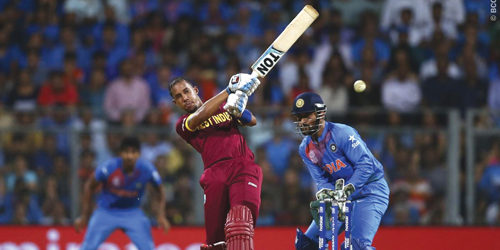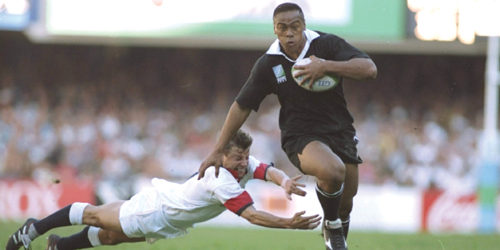
Does the traditional form of cricket have a future or will the shortened 20-over completely take over? Jim May, Chairman of Sussex Cricket, explains the issues facing the county and the wider game, and tells how Sussex is leading the way in the girls’ and women’s cricket.
Cricket always had such a comforting, leisurely image. It’s easy to picture the scene. Gentle applause on a idyllic village green greeting the crack of willow on the red leather ball. Ex-PM John Major famously predicted: “Fifty years from now Britain will still be the country of long shadows on county grounds, warm beer, invincible green suburbs…”
But this isn’t how cricket is being played across the world anymore. Indians pack stadiums for the gladiatorial Indian Premier League, a fast and furious 20-over (T20) battle between colourfully dressed teams thrashing out at the bright white ball.
For traditionalist this is a challenge to old sensibilities. For Sussex and other counties it is even more worrying as the proposal in the pipeline is for a new T20 league comprising big city teams, which may well sideline the counties altogether.
Jim May has been a board member at Sussex for 19 years, eight of these as chairman. He has overseen huge changes already, but this could be the biggest yet.
“The two forms of cricket are really different offerings,” Says Jim. “It’s like pop music and classical music. Some people like both, some like just one or the other.
“I actually like the shorter form but there are a number of people who only like the longer form, particularly among the traditional members of our club. But the dynamics of the club is changing. It used to be that the membership income was far more than gate income; now it’s the other way round. We get as much money now from people paying on the gate through T20 as we do from membership fees.”
The T20 games played by the Sussex Sharks have been exciting events, but what if the next step is a competition that excludes the county?
“Nobody’s formally agreed anything,” replies Jim, “It’s a slightly confusing story. What happened was that the ECB had initially put forward four different options of how to go forward with T20. When we had a meeting of the Chairmen and Chief Executives last September they wanted to pursue one option alone but we said we wanted two options to be pursued contemporaneously which they didn’t agree with, and that’s why we voted against.
“We’ve never been closed to change but what we want to do is to look at different options. We fully accept that the big challenge is engaging more youngsters and trying to get cricket on terrestrial TV. But it seems unlikely we’ll host one of these new teams, so we wanted to ensure we had certain safeguards.
“These included no use of existing team brands so they can be new teams, avoiding clashing with the competitions we run. And we wanted some reassurance that the existing T20 Blast would take place so the fans of the 18 counties still have the ability to go and watch T20 at their local county. At the moment all those things appear to be part of the plan going forward.
“We do still get crowds for the longer game in England, unlike Australia, India or South Africa. If you go to the MCG (Melbourne Cricket Ground) which houses 90,000 people, they might have 100 people in watching a Shield match, whereas here we will normally have between 1,000 and 2,000 people in, and the ground only holds around 7,000.
“But the long game is unappealing to the TV executives. I met the BBC Head of Sport a few years back and she said they had no interest in televising test matches because they were too long. T20 is a format that should be more readily digestible and accessible for non-paywall viewers. Of course, we also have to reach young people on their various devices, whether its phones, iPads etc.”
“We’re trying to ride two horses at the same time and so far we haven’t fallen off. We have the drama you can have over five days against Australia. And then there’s the T20 which appeals to people living busy lives and wanting a bit more excitement in a condensed form. I can’t think of another sport that has this dilemma. Actually there are three version if you include the one-day, 50-over games. In rugby you’ve got 7s and 15 but the players rarely mingle, whereas in cricket you do have people who play in all three formats.
“The paradox is, for years people did play short games in the evenings or whatever, they just weren’t called T20. Not many people played 50-overs when they were young.
“All we can do is keep working with local people and try to encourage boys and girls to try the game.”
Sussex leads the way with its focus on women’s and girls’ cricket. It is the only county with a female academy.
“We introduced it last year, 2016, and I’m really proud of the new academy. As a county we have always had a very strong tradition of girls’ and women’s cricket The academy required an initial investment of something like half a million pounds over three years, but we believed it was important to invest in the grass roots. You have to start with the youngsters.
“I’m standing down as chairman in March, having done 8.5 years I think it’s time to pass the baton on – but one of my proudest achievements was as a result of talking to an entrepreneur called Sir Rod Aldridge founder of Capita Plc. I knew that he was taking over an academy in East Brighton in a very socially challenged area, a school with not a terribly good reputation and he wanted to differentiate this school by having offerings on entrepreneurship and sport. And I said to him:
“Have you thought about cricket?”
“He started something called the Aldridge Cricket Academy in East Brighton which which takes students from Brighton Aldridge Community Academy and Portslade Aldridge Community Academy. It’s an academic offering in the morning and in the afternoon it’s cricket the whole year round. It’s not just players, it’s people who might be team analysts or physios.
“They put in this indoor centre costing í1.8 million which I imagine is the best one in the country in any school, public and private, funded by Rod Aldridge and another guy who is actually a hedge fund manager.
“I’m a governor of the successor school, the academy. They basically decided to make that the headquarters for the Sussex women. So they’ve now got a dedicated indoor centre, which is actually fantastic. And one of my personal dreams is to see youngsters, boys and girls, from East Brighton playing for Sussex and then for England.”






